Frederik's Church (Marble Church), Copenhagen
The main decoration and dominant feature of the Amalienborg Palace complex is undoubtedly the Rococo Evangelical Lutheran church, designed by Nicolai Eigtved. The church is named after the Danish King Frederik V (Frederiks Kirke), but is better known as the Marble church (Marmorkirken).
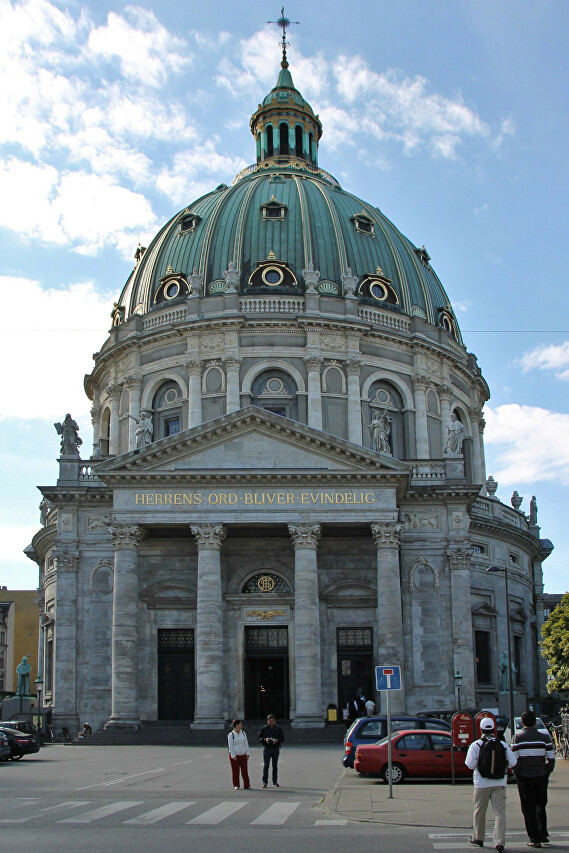
In 1740, architect Nicolai Eigtved designed the Frederikstaden quarter to mark the 300th anniversary of the first coronation of a member of the Oldenburg royal family. The project also included the construction of the largest church in Scandinavia. Probably, the architect took the model of St. Peter's Basilica in Rome.

The foundation stone was laid personally by King Frederick V on October 31, 1749, but construction was very slow due to lack of funds. In 1754, the architect died and all construction work stopped indefinitely, in the seventies, the project was finally buried by the Minister of the Danish government Johann Friedrich, Graf von Struensee, who was a favorite of Queen Caroline Mathilde and actually ruled the state. The unfinished building remained in this form for more than a hundred years, gradually turning into ruins.
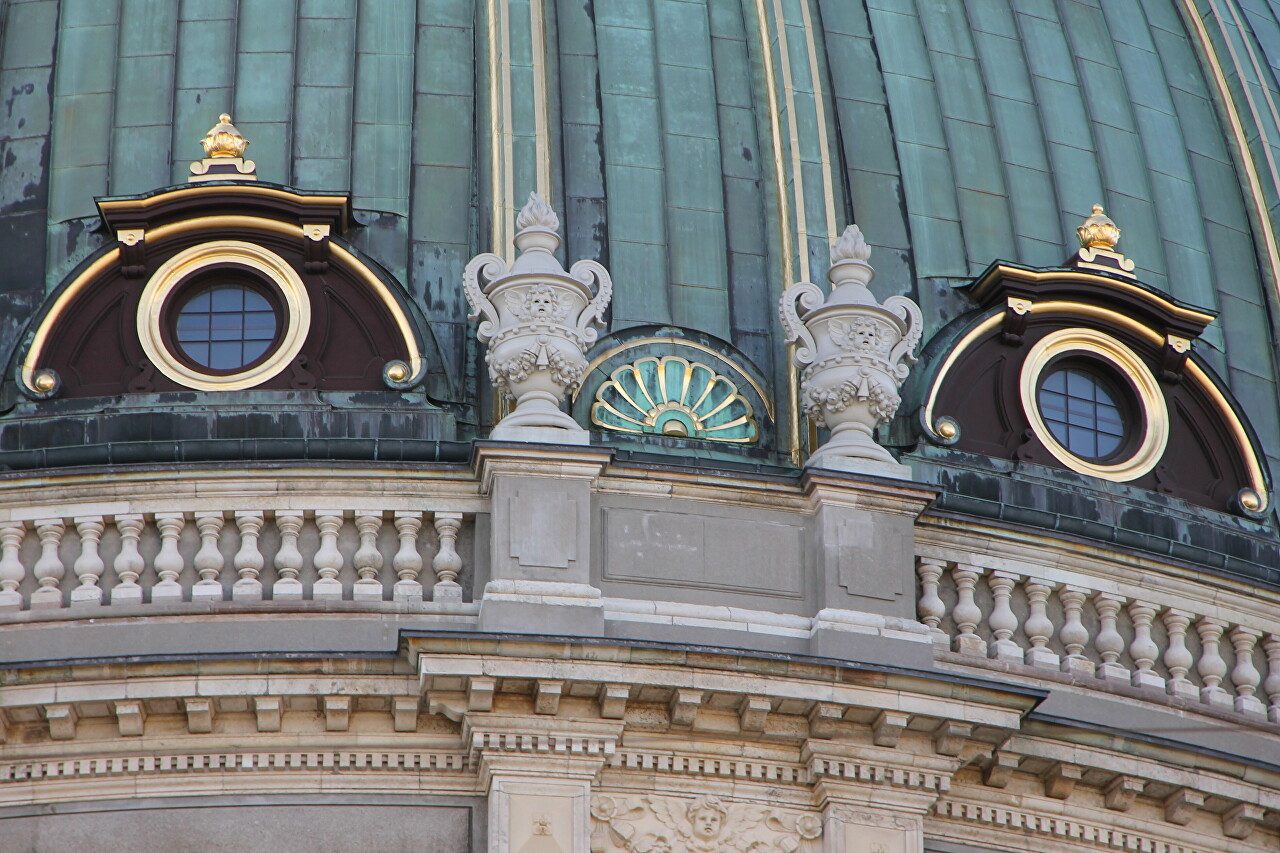
In 1874, Finance Minister Andreas Frederik Krieger sold the unfinished church building to banker Carl Frederik Tietgen for 100,000 rigstallers, subject to its completion according to the original design. For this, the banker received the right to build neighboring plots. The deal aroused much suspicion and on January 25, 1877, the court charged Krieger with corruption, but found no evidence and the minister was acquitted. Construction resumed under the leadership of Ferdinand Meldahl, and finally, on August 19, 1894, the church was opened to the public.
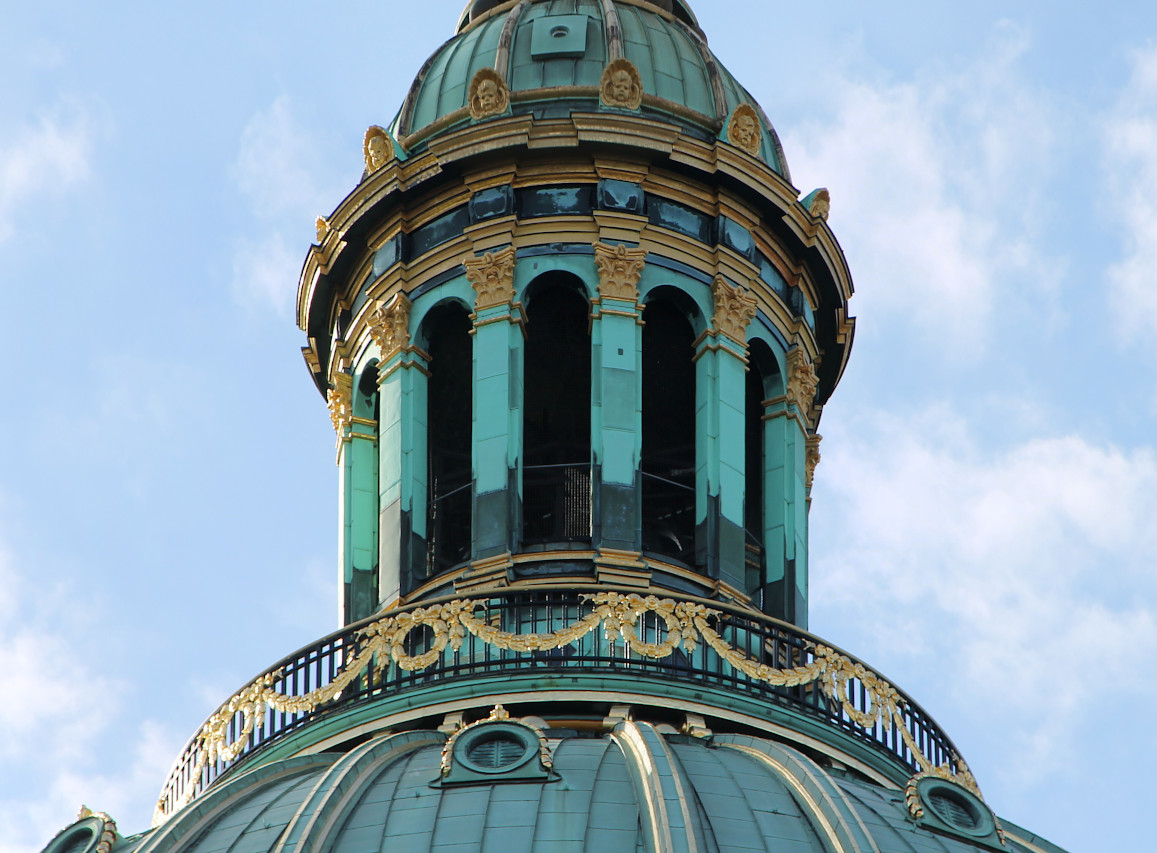
The original design called for the church walls to be faced with marble, but in order to save money, the marble was replaced with limestone. But this is more than compensated by the exquisite and luxurious finish of the dome, covered with copper sheets with an abundance of gilded ornaments.
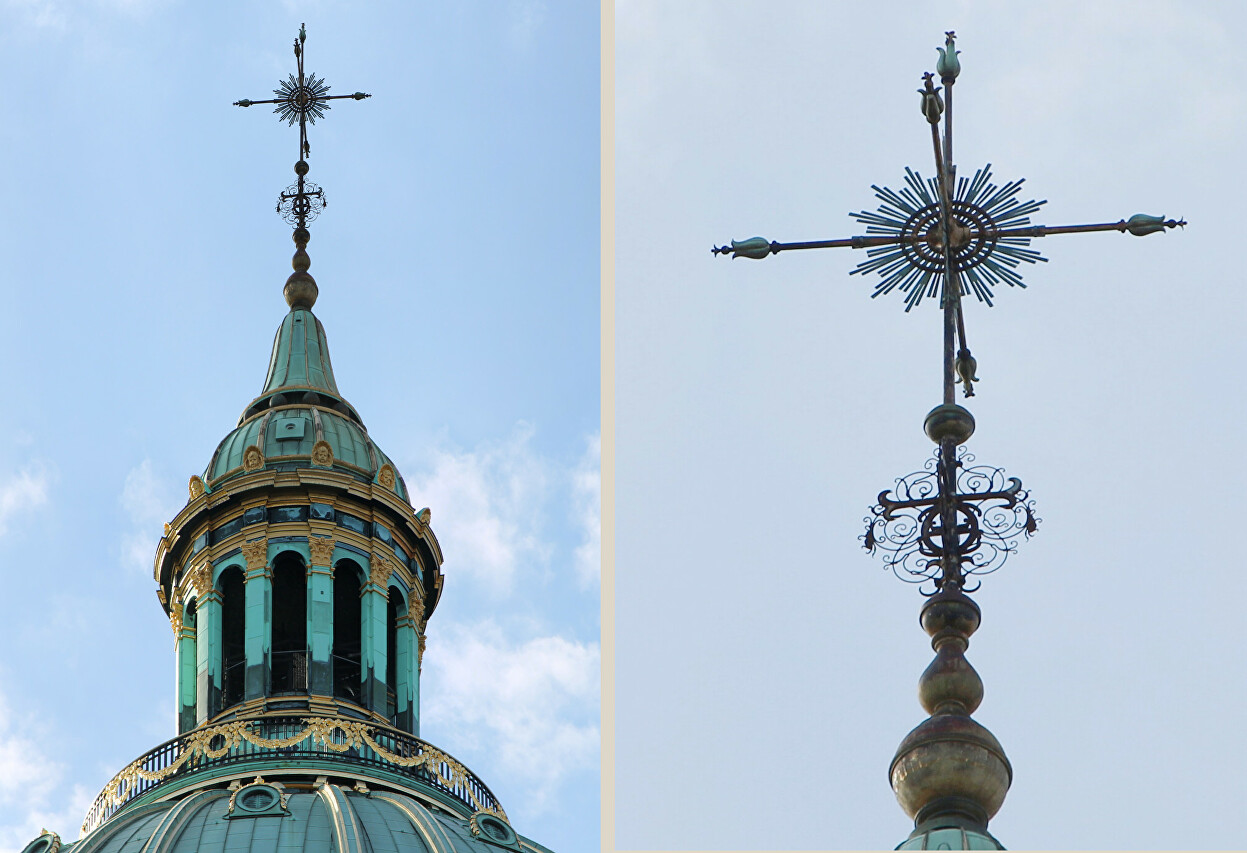
Above the main portal, you can see the golden letters of quotes from the epistle of the Apostle Peter HERRENS ORD BLIVER EVINDELIG (The Word of the Lord endures forever). Along the perimeter of the cornice are statues of prominent theologians and church leaders.
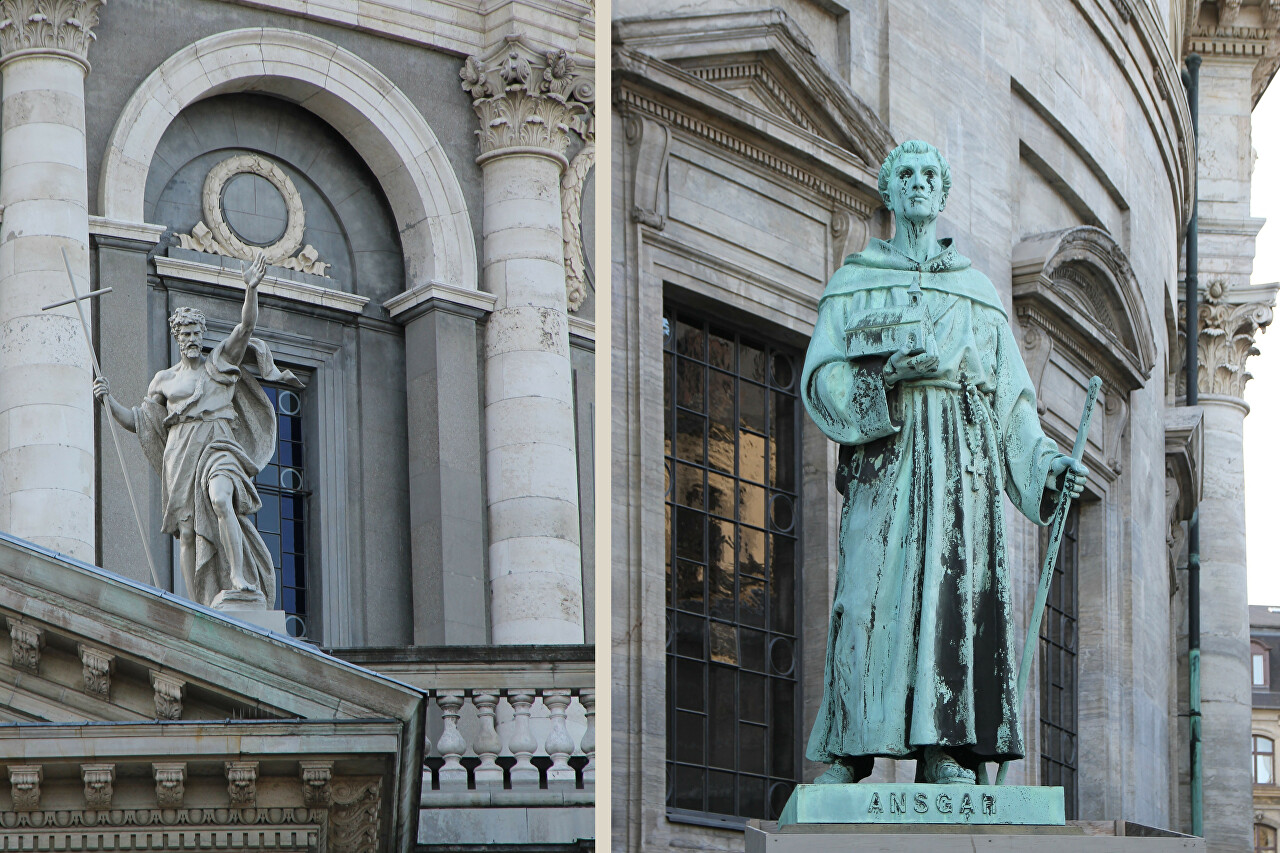
Now let's go inside the church and look at its interiors. The first thing that makes an impression is, of course, a huge round hall covered with a grandiose dome.
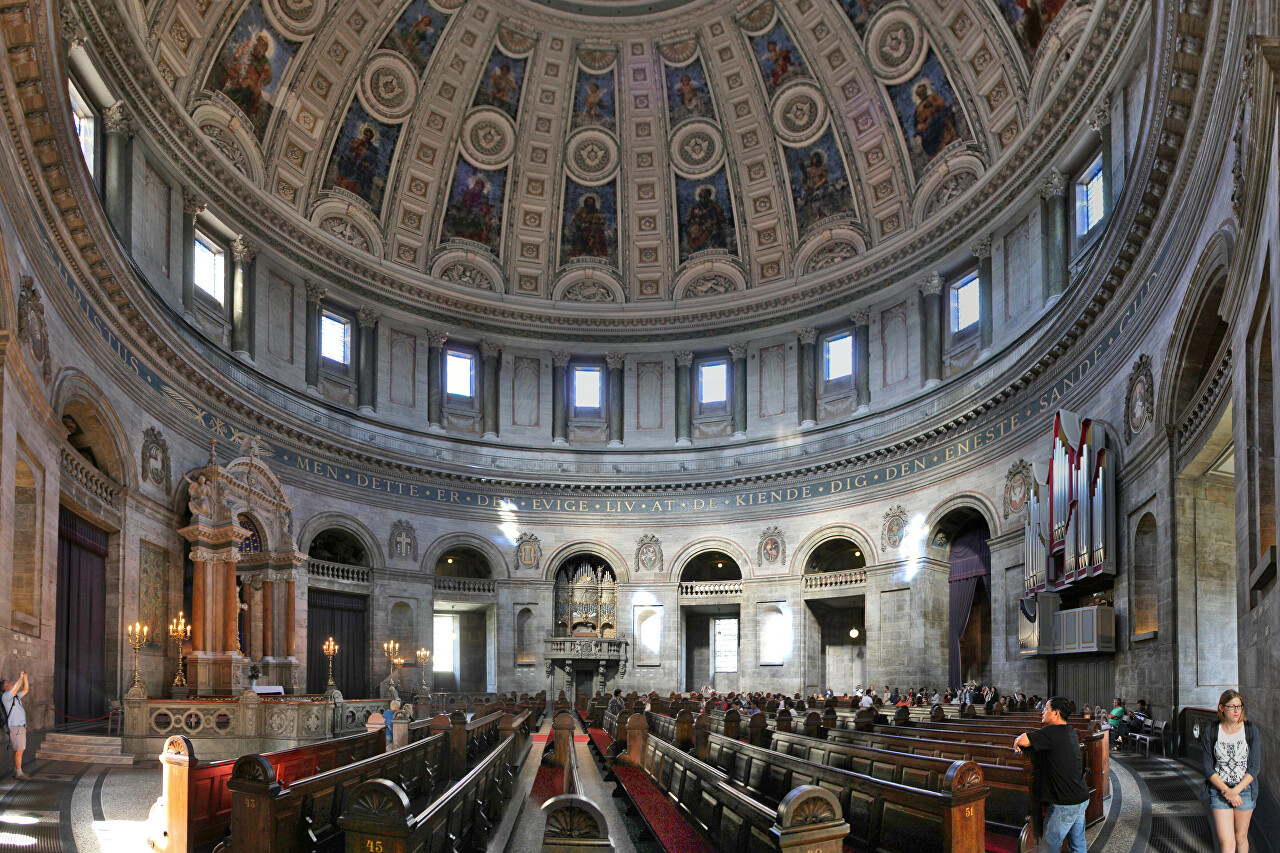
The dome has a diameter of 31 meters and is supported by 12 columns, just like its Roman prototype. The dome also consists of 12 sectors, each containing a painting depicting one of the apologists and an angel above it. The dome was designed by Christen Nielsen Overgaard, Henrik Olrik and Anton Dorph.
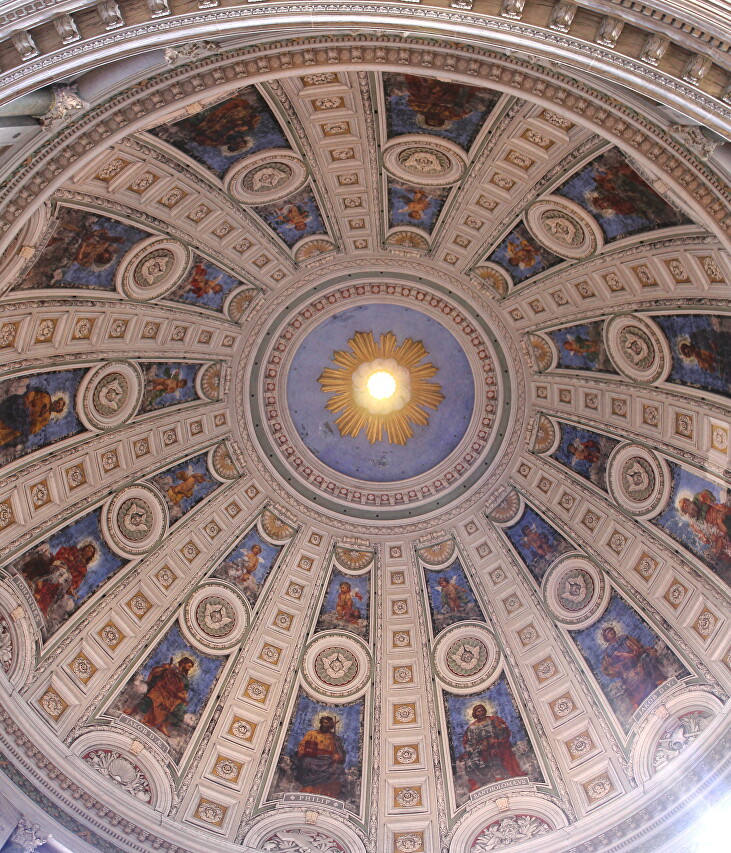
In general, the interior design is quite strict, the walls of gray limestone have a minimum of decorations. Under the dome there are 12 small windows, however, this is quite enough for natural lighting, the church does not give the impression of gloomy.
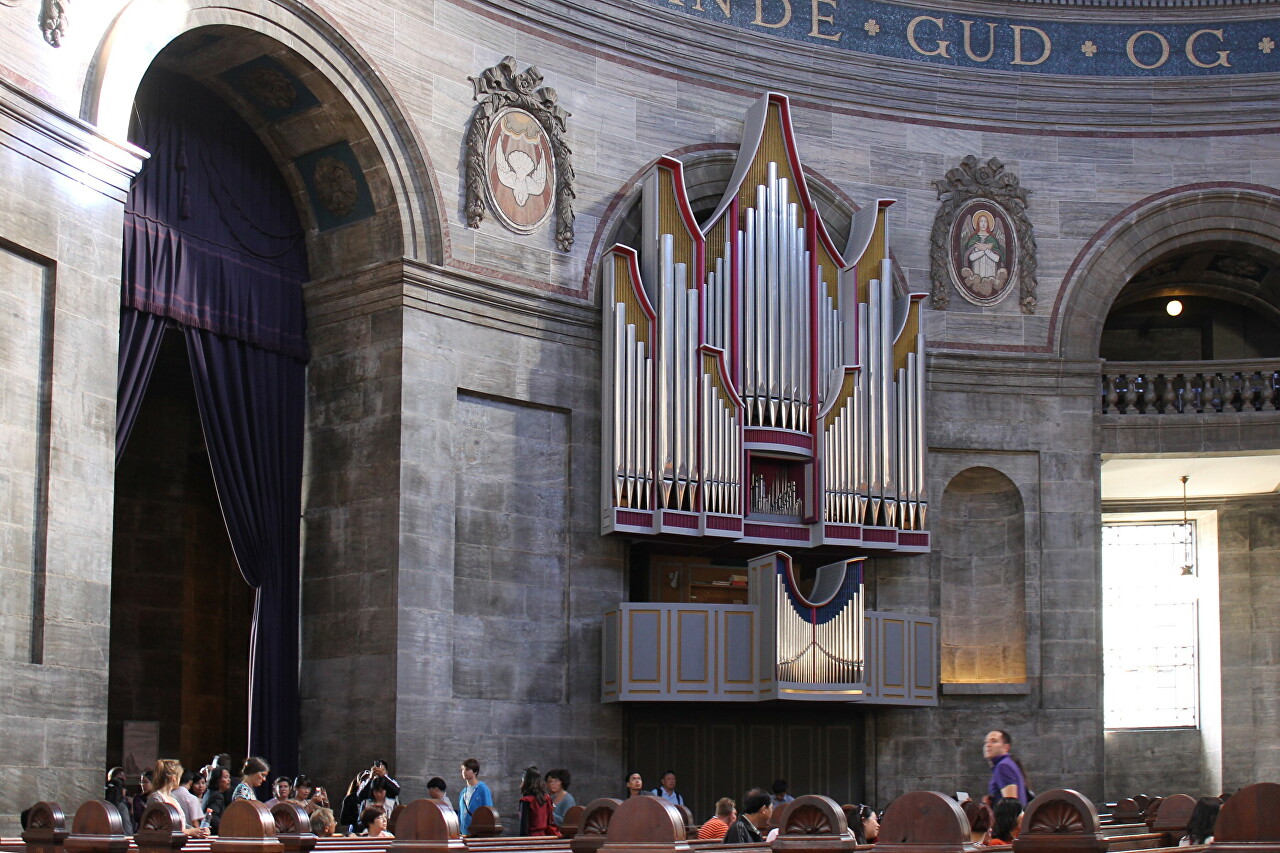
The altar is designed by Ferdinand Meldal, decorated with marble of different colors and covered with stucco decorations. Hans Christian Peterson worked on the sculptural design, a cross about three meters high by Harald Garde. In the design of the altar, you can guess the style of the churches of Rome and Venice. The space in front of the altar is surrounded by a marble balustrade with high gilded candelabra.
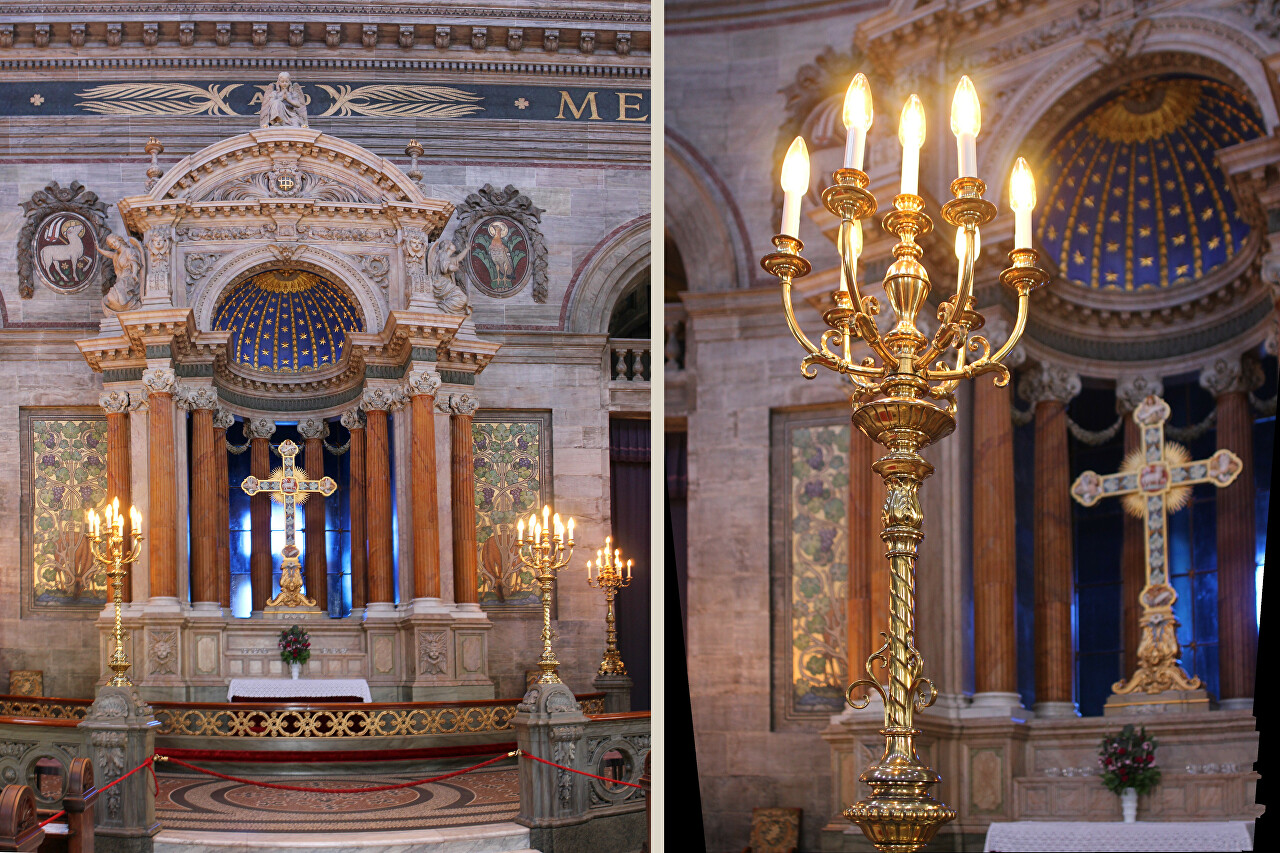
To the right of the altar is the baptismal font made by Joachim Skovgaard from gray-white Swiss marble.
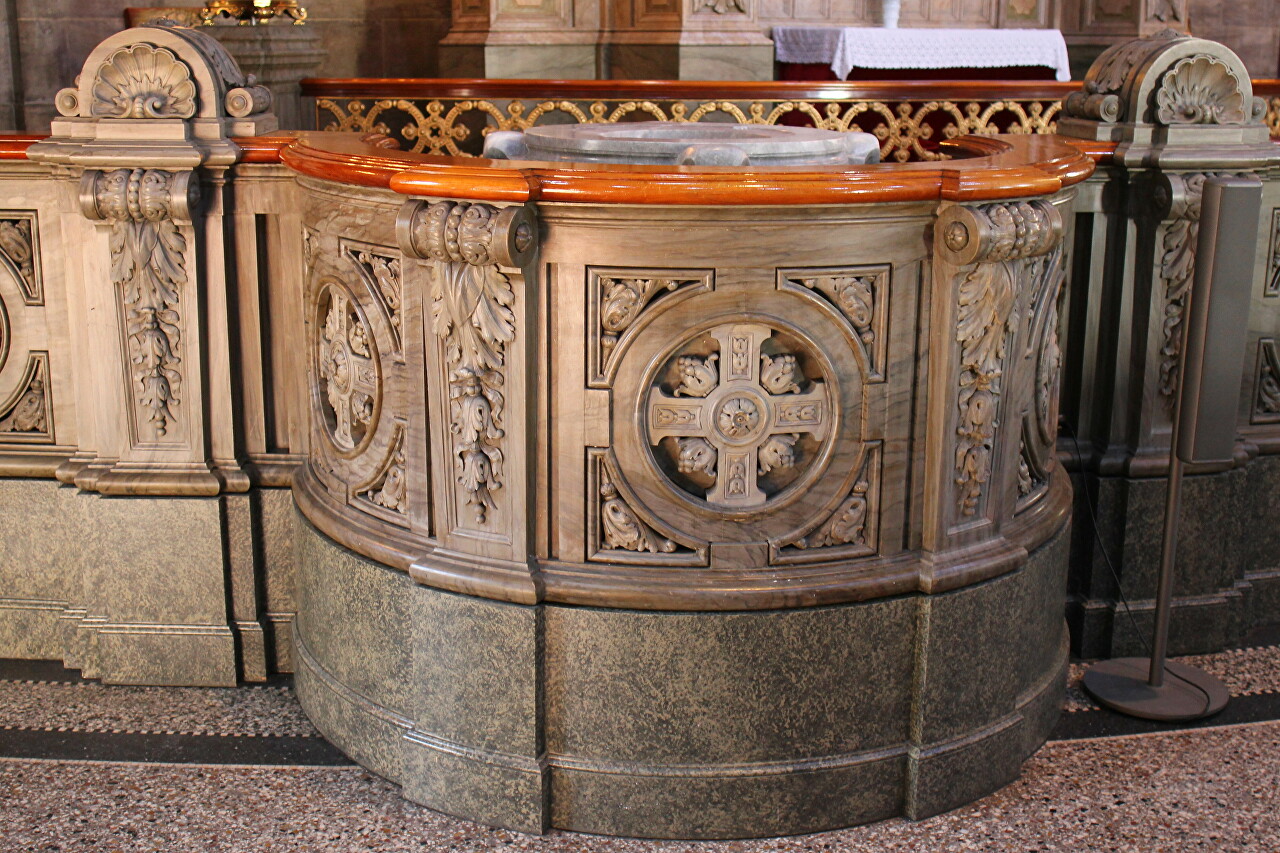
The first organ was installed in 1894, it was made by master Knud Olsen, the organ had 21 voices. The organ is designed according to the drawings of Ferdinand Meldal, the sculptures were made by Hans Christian Petersen.

By the middle of the 20th century, the old organ fell into disrepair and in 1963 a new organ was installed in the church, made by the famous company Marcussen & Søn. The organ has 51 voices, and 11 pipes of the old organ are used.
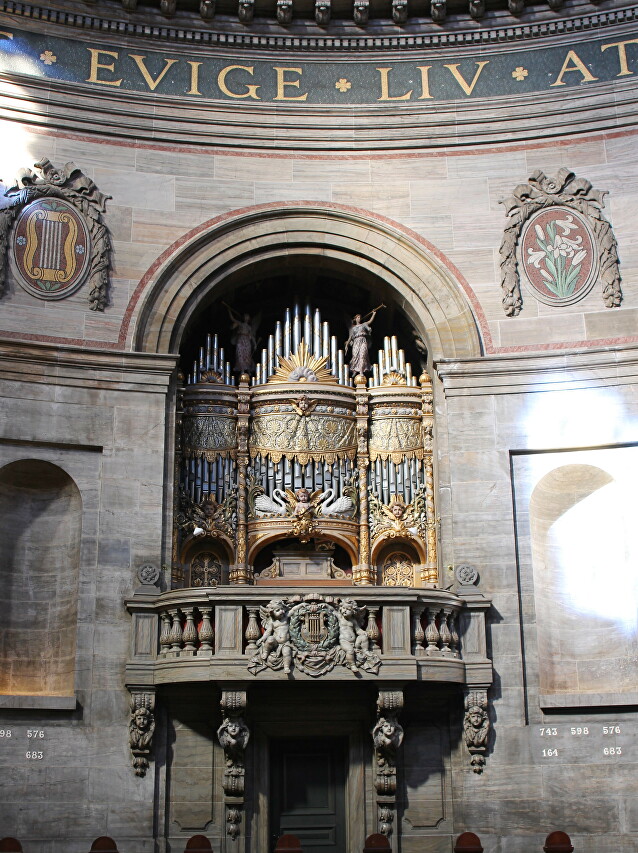
At the main entrance, you can see a carved oak bas-relief made in the early 16th century. It depicts a plot from the Passion of Christ, the removal of the body of Jesus from the cross.
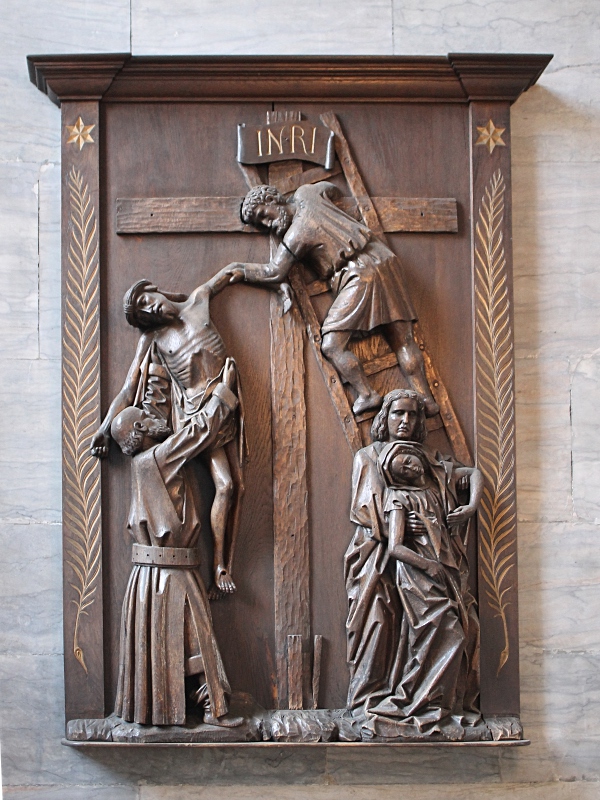
The Marble Church is open to the public daily from 10 to 17 hours, on Friday and Sunday from 12 to 17 hours. On Sundays and public holidays, services are held in the church at 10:30. Entrance to the church is free. You can climb to the top of the dome every day in summer from 13.00 to 15.00, in winter on weekends. A ticket for adults costs 35 DKK, for children 20 DKK.
